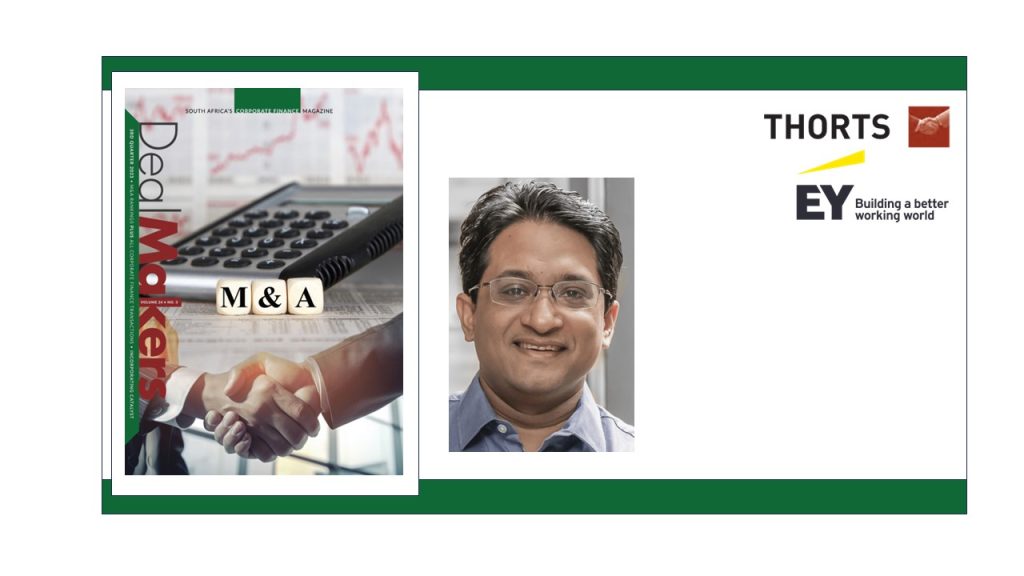In a rapidly evolving digital world, corporate finance is witnessing the dawn of a transformative era, with artificial intelligence (AI) at the helm. No longer are decisions exclusively grounded in Excel analyses and instinct. Today, AI offers a fresh lens, redefining how we pinpoint corporate finance transactions and assess them within the context of shifting economic and geopolitical landscapes.
A Testimony to AI’s Growing Role
A recent EY study of 1,200 CEOs unveiled some interesting trends. CEOs overwhelmingly (65%) view AI as a force for good, attributing its potential to both enhance business efficiency and foster societal improvements, such as healthcare advancements. More than a quarter (27%) of respondents are already harnessing the power of AI in their mergers and acquisitions (M&A) processes.
However, this optimism is tempered by concerns. The majority of CEOs believe that more work is needed to mitigate the social, ethical and criminal challenges that AI might introduce, from cyber threats to the spread of deepfakes. Yet, despite these apprehensions, business leaders remain positive.
Ask the Right Questions: The Art of Prompt Engineering – The better the question, the better the answer, the better the world works.
While AI’s prowess in data analysis is widely celebrated, the essence of obtaining actionable insights lies in asking the right questions. This is where prompt engineering, our ability to articulate the question in a manner that is understandable to the AI model, becomes invaluable. By finely tuning our queries and prompts, we can guide AI systems to extract precise, valuable insights from heaps of data.
From Vast Data to Valuable Insights: AI in Action
The real-world applications of AI, particularly when paired with adept prompt engineering, are vast. Machine learning algorithms and natural language processing enable rapid identification of investment opportunities, risk assessments and market trend analysis.
Target Identification
Consider an investment bank using AI to screen global news and financial reports. By engineering the right prompts, the system can not only flag potential merger candidates, but also assess how these targets align with larger strategic goals or macroeconomic indicators. Refinitiv, a global provider of financial market data, has developed a quantitative prediction of M&A targets by analysing text, patent and fundamental content.
AI can also be used to evaluate the cultural compatibility of merging entities. Salesforce’s acquisition of Slack is a great instance of aligning culture and product offerings. Tools like CultureX, an AI platform backed by MIT, provides insights into company culture using employee reviews on platforms like Glassdoor.
Due Diligence and Valuation
AI expedites and enhances due diligence processes by rapidly analysing data sets, ensuring comprehensive risk identifi-cation and offering dynamic, real-time valuations of target companies. Tradition-ally, transaction professionals grappled with vast amounts of siloed data manually. EY’s “Diligence Edge”, powered by AI, is revolutionising this approach. By harnes-sing the capabilities of IBM Watson’s Knowledge Studio and Discovery, EY Diligence Edge offers a panoramic view of target companies and their competitors.
The AI-driven “smart data room”, within and powered by Watson, streamlines data ingestion and analysis, allowing profes-sionals to swiftly identify and analyse pertinent information. The final layer of this tech stack is its presentation capabilities, which allow findings to be showcased in intuitive, interactive dashboards.
Predictive Analytics and Financial Modelling
AI models optimise capital allocation by predicting high-return investments and forecasting market trends, guiding financial decisions. BlackRock leverages Aladdin, an AI system, to analyse risks and make investment decisions. The platform provides an end-to-end picture of portfolios, assisting in capital allocation.
Real-time Monitoring
AI continuously monitors stock markets and other financial indicators, alerting businesses to potential acquisition targets or market shifts that align with predefined criteria. Goldman Sachs uses its Marcus platform, which incorporates AI, to continually monitor financial markets and offer real-time insights. Such platforms can be tailored to identify potential M&A targets based on predefined criteria and real-time market dynamics. Cisco, when it acquires companies, uses AI and machine learning tools to help integrate the acquired company’s products, technology and team, ensuring a smooth transition.
Regulatory & Contractual Oversight
AI tools ensure compliance with evolving international business laws during cross-border M&A deals, and assist in analysing contracts for potential risks and obligations. EY uses Kira, an AI-powered contract analysis tool, to assist in identifying and extracting regulatory clauses and requirements from legal documents.
Risks to Consider: The Other Side of the AI Coin
The marriage of AI and prompt engineering in corporate finance promises efficiency, precision, depth of insight, and evolving accuracy. But as with all powerful tools, it must be wielded with care, understanding both its potential and its pitfalls.
As promising as AI is in reshaping corpor-ate finance, it is not without its challenges:
Data Quality
AI models are only as good as the data fed into them. Inaccurate or biased data can lead to flawed insights, potentially causing significant financial repercussions.
Over-reliance
An over-dependence on AI without human oversight can be risky. It is essential to strike a balance between automated insights and human judgement.
Security Concerns
AI systems, like any digital platform, can be vulnerable to cyberattacks. Ensuring robust cybersecurity measures is paramount.
Ethical Implications
From data privacy issues to the potential biases in AI algorithms, there are several ethical considerations to be addressed.
Regulatory Challenges
As AI becomes more prevalent, regulatory bodies worldwide are grappling with creating frameworks to govern its use, which could impact its application in corporate finance.
Closing Thoughts
The potential of AI to reshape corporate finance is evident. As the tools become more sophisticated, so does the importance of crafting the right questions. In a domain where strategic decisions have monumental consequences, the synergy of AI and adept prompt engineering can be the much-needed ace up the corporate finance professional’s sleeve.
Brian Vaddan is an Associate Director in the EY Strategy and Transactions Team, focusing on Financial Modelling and Data Analytics.

This article first appeared in DealMakers, SA’s quarterly M&A publication.
DealMakers is SA’s M&A publication.
www.dealmakerssouthafrica.com



